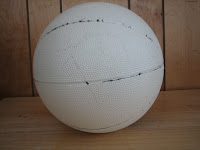Have your students investigate a mineral, but make it more personal for them - have them research their own birthstone.
FYI: Most June babies will say their birthstone is a pearl. Since a pearl is made by a living thing, it is not a mineral. Fortunately, the alternative birthstones are moonstone and alexandrite, which are minerals.
Now, I don't know about you, but I'm really not much for reading reports. In addition to the dull, repetitive nature of them, in my experience, there is also the increased likelihood of plagerism.
Thus, I present the
Non-Report...
 The Non-Report needs to include the following information:
The Non-Report needs to include the following information:-Name of the birthstone
-Color(s)
-Physical Properties (hardness, streak, density, crystal structure, cleavage/fracture, luster, specific gravity, etc.)
-Chemical composition and how that relates to its color
-Uses (besides jewelry)
-Where it is mined/found
-Other interesting information (cost, legends, etc.)
 Some Non-report ideas:
Some Non-report ideas:-Kids' book (along the lines of Magic School Bus, for example)
-Video or live performance - skit, song, rap, puppet show, infomercial....
-Ad (like the glossy jewelry ads in the newspaper)
-The life story of ___________ as told by ___________
-Autobiography of _______________
-Newspaper article, as if you're its discoverer

And, I'm not really a big poster person (they take up too much room!), but will sometimes offer a poster option, if they do it in a foreign language (talk to the foreign languages teachers at your school - maybe they'll offer students credit for taking on this option)










































